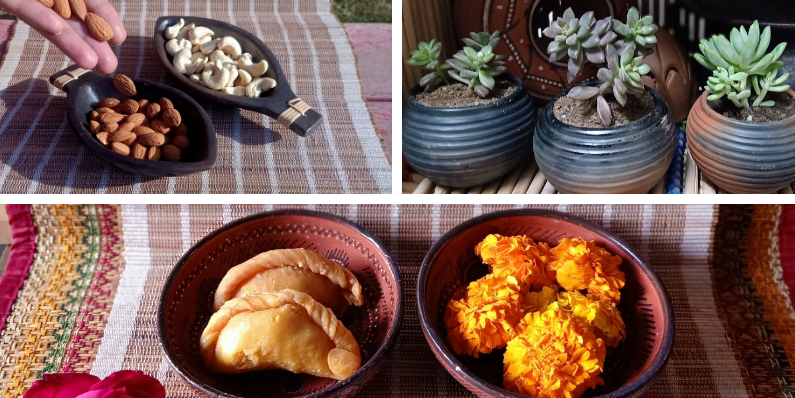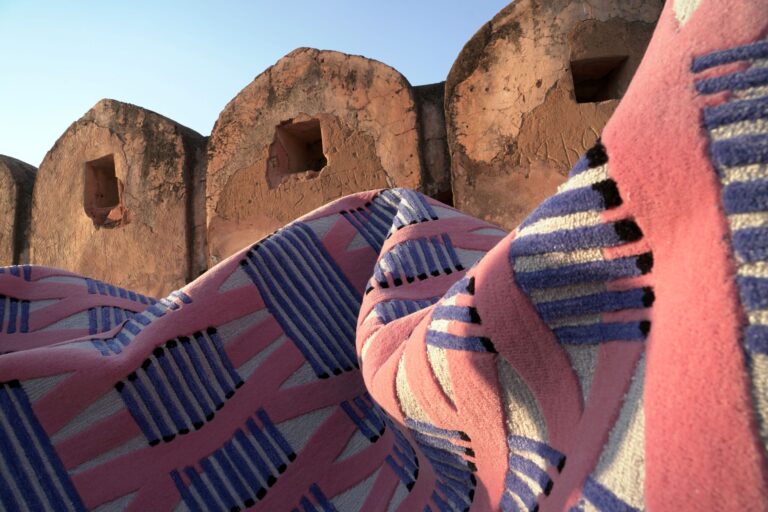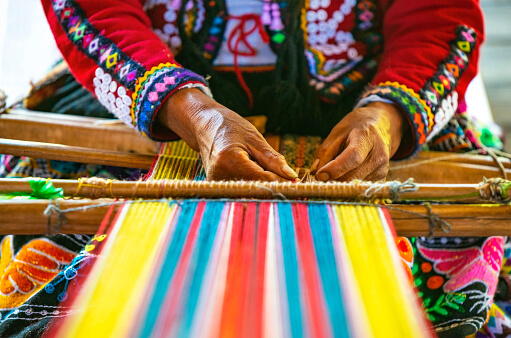Pottery as a craft form has been practiced across the length and breadth of our country through the ages and remains one of the most timeless living craft traditions of India. The manual and authentic art involving high labor is being taken over by technological innovations.
It is believed that the art of shaping pottery is as old as humankind itself. Every region of India has its unique form of pottery or clay craft.
Terracotta by Sachii is an initiative to empower diverse potters across the nation and revive our traditional pottery clusters. Founded by Sachii Tripathi, a design graduate, to connect potters making beautiful indigenous pottery with far-away buyers and craft lovers with no direct access to authentic products, through e-commerce.
Follow our conversation with Sachii as she tells her tale of how she combined her passion, experience, and knowledge to create this cultural enterprise that aims to strengthen indigenous pottery clusters of India.
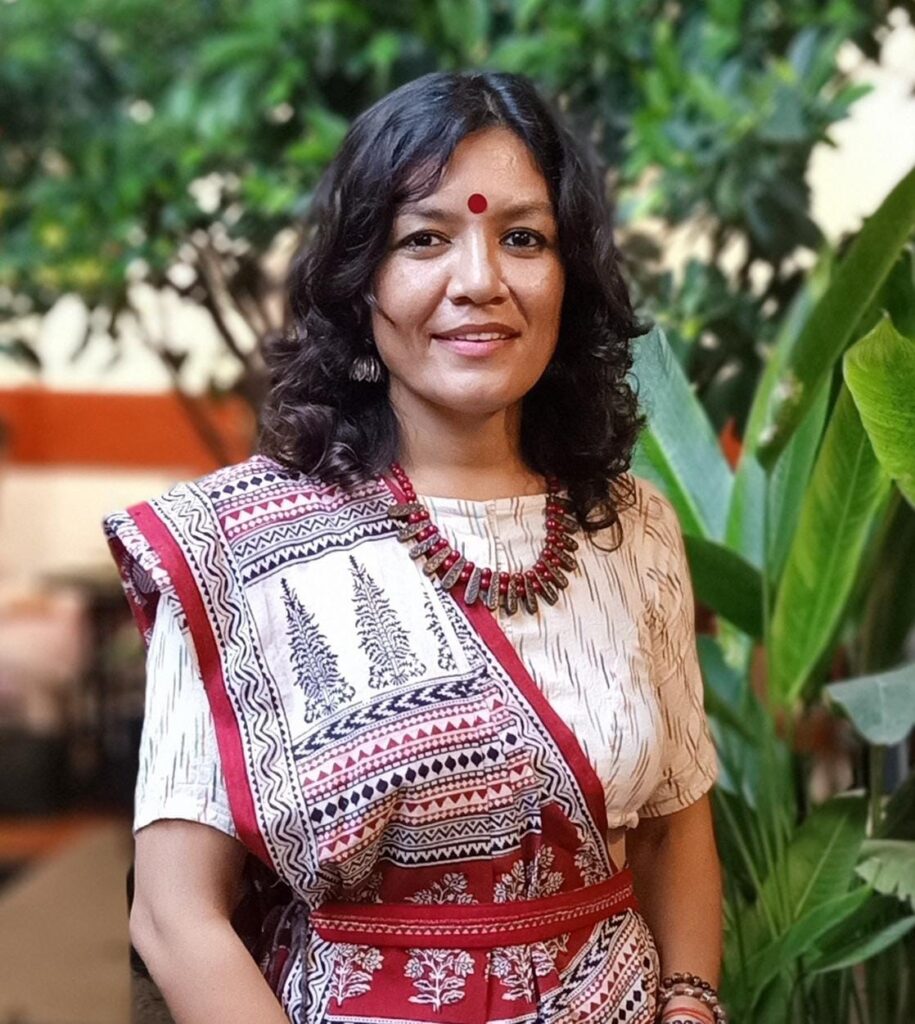
Designing my way through Life – Shaping up of Terracotta by Sachii
I belong to the age-old city of Kashi. My father was in the PWD and we were roaming all around Uttar Pradesh but as our higher studies approached, my mother decided to be stationed in Varanasi. I believe my mother is the major reason behind my dominant creative side and that of my two sisters as well. We grew up wearing clothes she made. She designed our home furniture, handcrafted cards, bouquets, and souvenirs.
Following the then prevailing trend, I pursued engineering. During my hostel days at KNIT, Sultanpur, my creativity surged. I wanted to pursue designing, however, started my MBA instead. I was a part of the Faculty of Management Studies at Banaras Hindu University. I opted out of the course as my heart was still hooked on to designing. With upset parents on my side, I joined Infosys and appeared for the entrance examination of the National Institute of Design, Ahmedabad simultaneously.
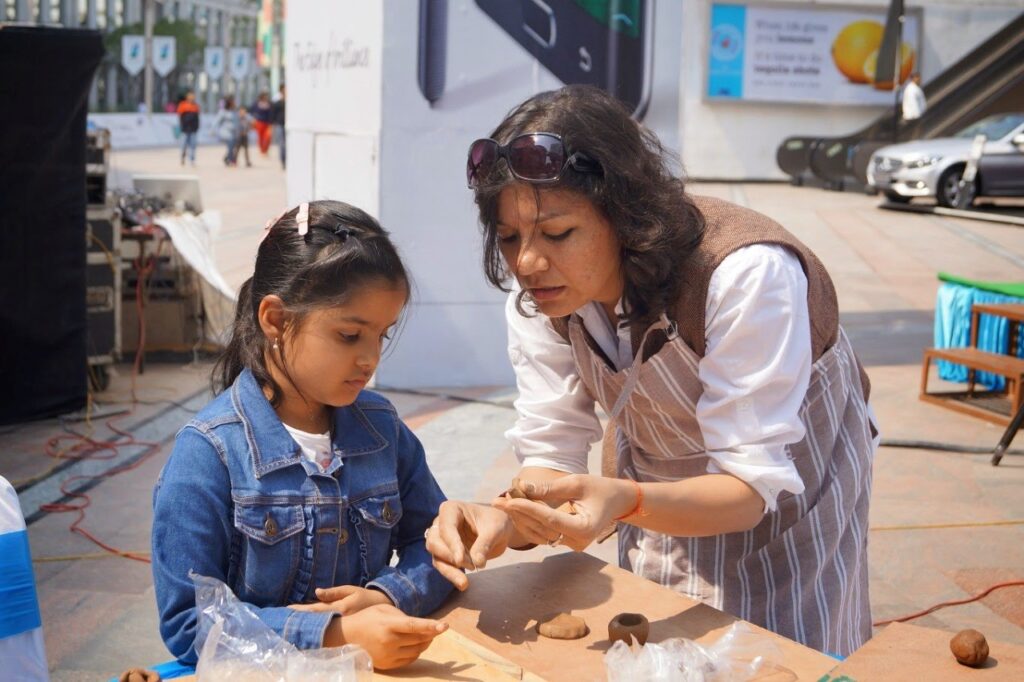
I cleared several rounds of the entrance, left Infosys, and became a part of NID in their Ceramics and Glass Design course. I moved to Delhi and gained rich corporate experience but I always wanted to do something independently. In 2019, I finally resigned to become an entrepreneur. Thus began my journey with pottery.
Bridging Traditional and Modern Solutions
I began pottery at home and participated in various exhibitions. In 2020, I was a part of Studio Potter’s Market, a nationwide platform to showcase artwork in an informal forum at The Kalaghoda Arts Festival, Mumbai. Being a part of exhibitions and my long corporate stints, connected me with a lot of artisans.
When the pandemic happened, the handicrafts sector was struggling to survive. I got in touch with the artisans to enquire about their well-being. In the process, I became a part of the collaborative platform ‘A Hand for Handmade’ – an initiative to help artisans and give them continued income during difficult times. It struck me then to create a dedicated platform of my own where I can connect traditional potters and artists to discerning buyers through e-commerce.
With that idea in my mind, I signed up for the Women Startup Program by NSRCEL, the startup and innovation hub at the Indian Institute of Management Bangalore. The program focuses on the Government of India’s vision of ‘Atmanirbhar Bharat’ and ‘Vocal for Local’. Out of the 11,500 women who applied, I was among 2700 who completed the initial 5-weeks of training. I was picked up by NSRCEL for 6 months of incubation which is where Terracotta by Sachii took shape and was among the few start-ups to receive grants from them. My journey at IIM-Bangalore proved fruitful in the creation and building of the venture as I had no prior business knowledge.

My venture was also taken up by CIIE.CO set up at IIM Ahmedabad to nurture early-stage startups. I was taught how to connect to corporates for bigger orders and to scale my business through collaboration and partnerships.
Currently, we sell through different e-commerce platforms like Amazon, Okhai, Svadeshy, etc., and on our website. We are already selling master creations from more than 5 different craft clusters and are connecting with more. The creations include a mix of my designs and that of our master artisans.
A Melting Pot of Cultures – Featuring Unique Pottery Collections from India
For thousands of years, Pottery has been one of the most beautiful art forms of expression. Pottery is created by molding clay into a shape that is later heated at high temperatures for hardening and setting. I have been blessed to witness these region-wise art forms closely and want my customers to know about them.
Artisans at Terracotta by Sachii include National and State recognized Shilp Gurus and Master Craftsmen. My enterprise offers collections from five clusters of traditional pottery across India.
Kutch Painted Pottery
The Kutch Painted Pottery or the Khavda style of pottery carries its traditions from the Indus Valley Civilization. The artisans collect mud or ‘rann ki mitti’ from nearby lakes and make their clay that is shaped using a potter’s wheel or by hands and then left to dry. The utensils are coated with a thin wash of geru, a local soil, decorated with dots of clay-based paint, usually red, white, and black, using bamboo twigs and then fired in a kiln.
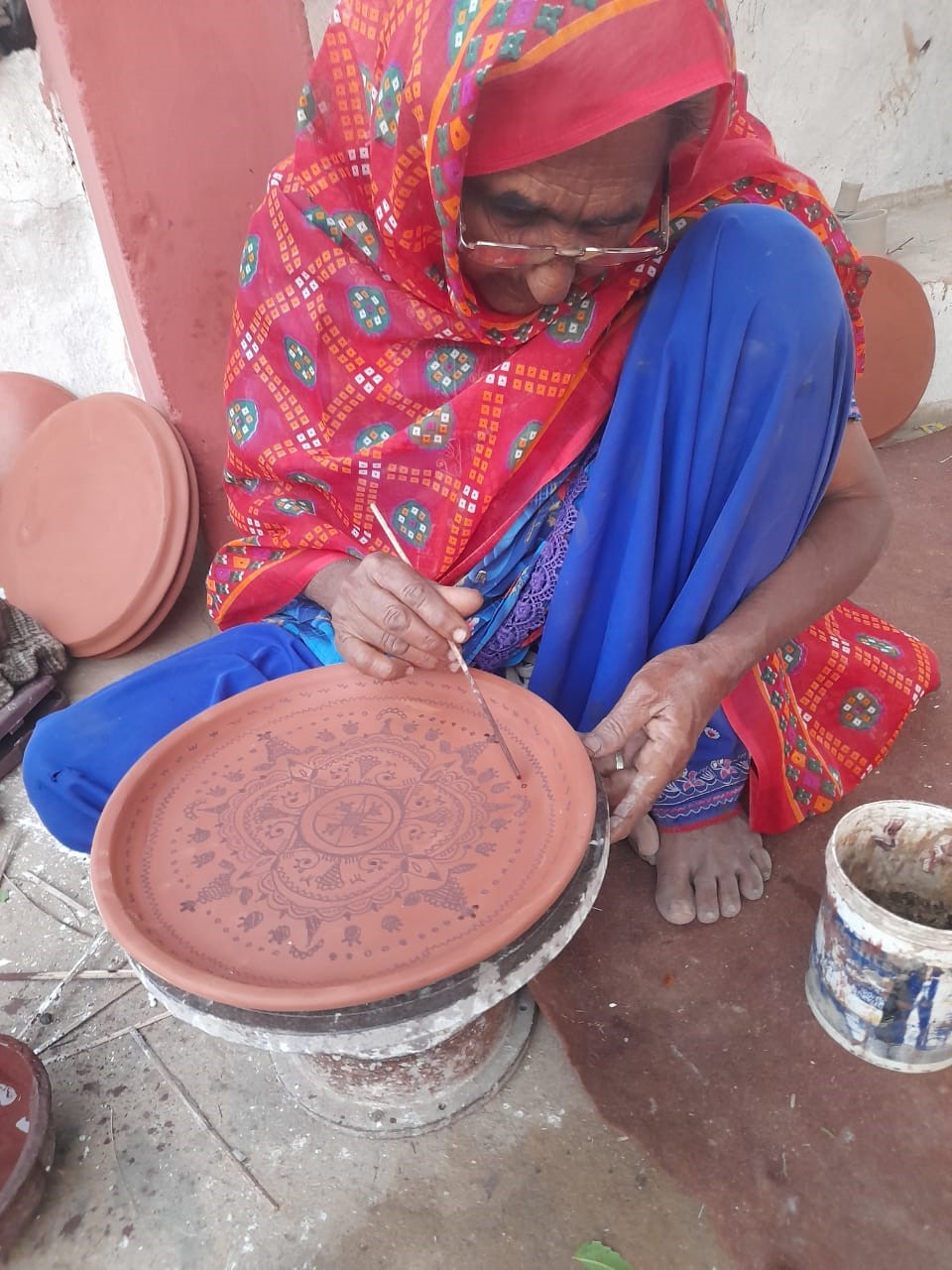
Longpi Black Pottery
In Manipur’s Ukhrul district are two villages named Longpi Khullen and Longpi Kajui, from where Longpi Coiled Pottery comes. Practiced by the Tangkhul community, Longpi pottery is made from a mixed paste of ground black serpentine stone and special brown clay, found in the Longpi village. The pots are manually shaped and the black color is a result of reduction firing. The entire process is labor intensive and the beautiful shine on the ware comes from polishing them with the reddish-brown seed of a wild creeper and finally with beeswax.
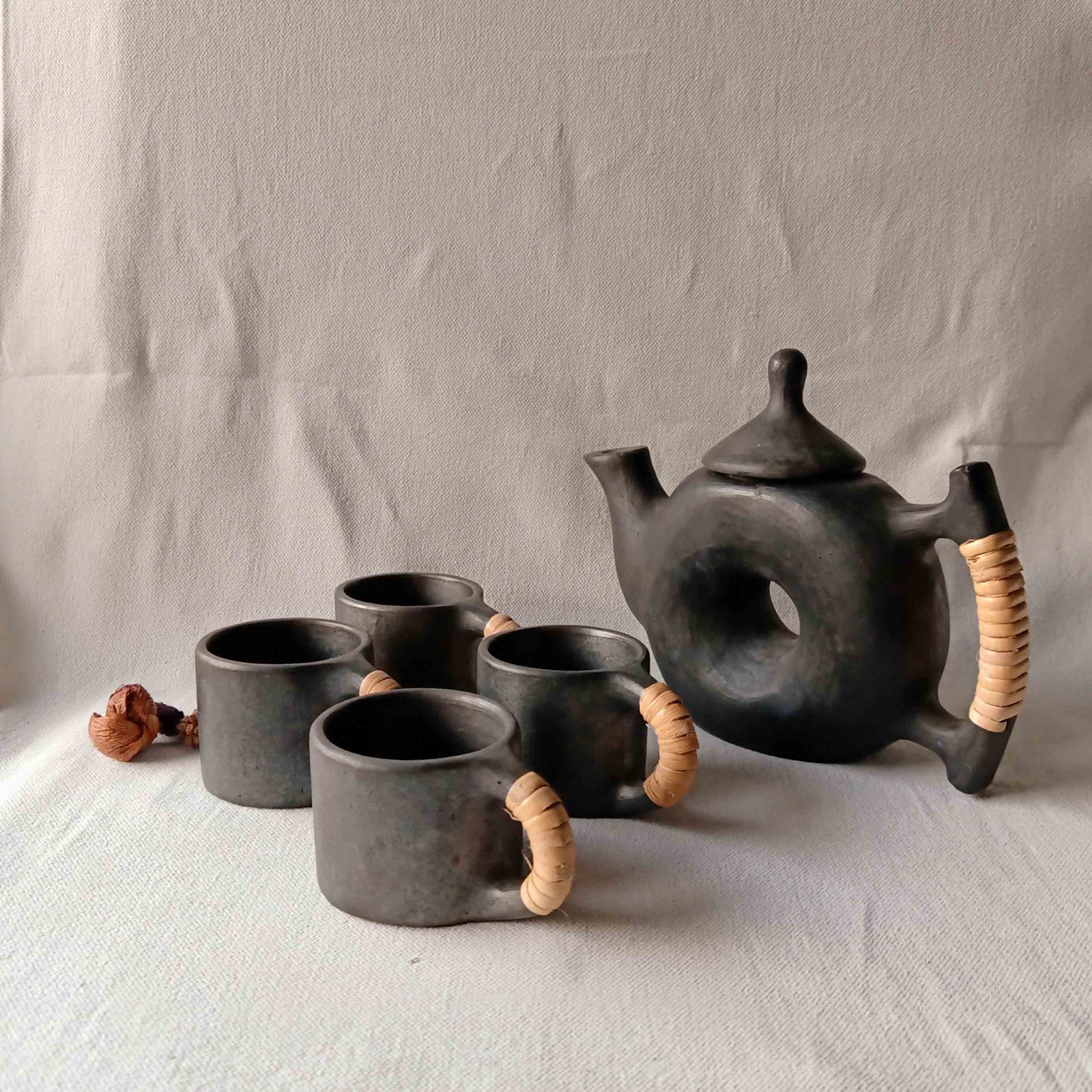
Lippan Mud Art
A traditional mural folk art form from Gujarat, Lippan is used to decorate the walls of houses in Kutch. The designs in mud and mirror work adorning the exterior of houses, not only serve a decorative purpose but also keep the house cool by reflecting light and heat.
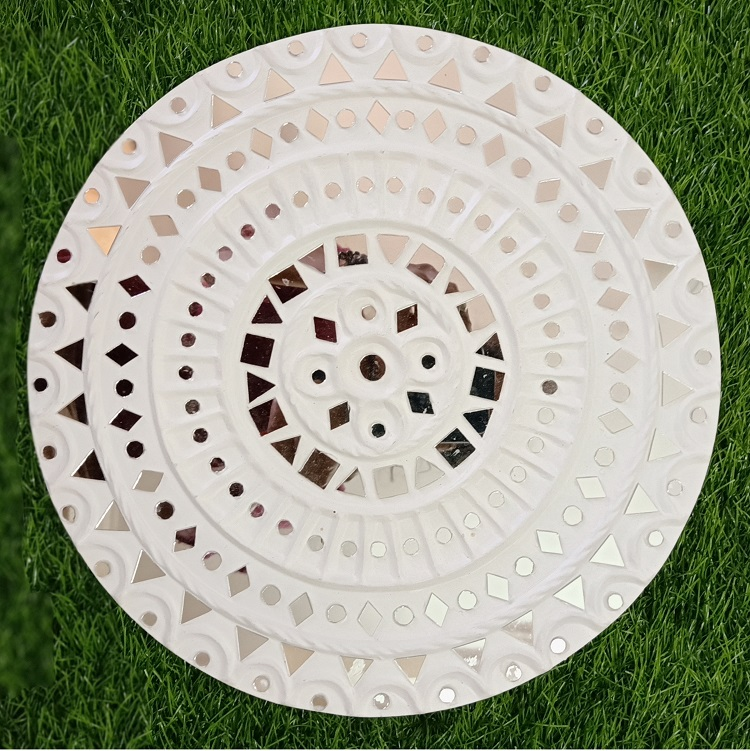
Designer Reduction-Fired Pottery
Cutting out oxygen supply from the kiln while firing the ware, results in black color as the fire draws oxygen from the body of the clayware. This results in a designer product, with a play of unique colors such that no two wares are ever alike!
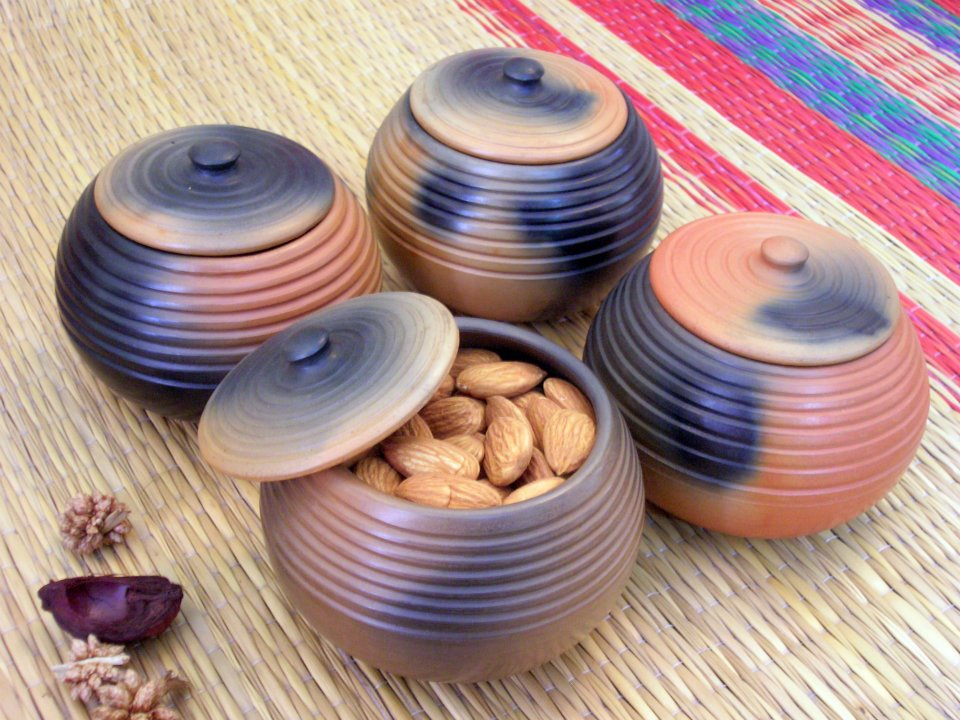
Nizamabad Black Pottery
Made with finely-textured local pond clay, the creations include utensils, local figurines, and decorative items. After shaping, carving, and drying, these are rubbed with mustard oil. Sharp twigs are used to etch out patterns, and the pottery is fired in such a way that the smoke is captured within the furnace, and the soot creates a shiny black surface. The grooves are filled with a silvery powder of lead, mercury, and zinc. The craft is used only for ornamentation purposes and was given the Geographical Indication (GI) tag by GoI in 2015.
Recently, our Prime Minister Shri Narendra Modi gifted it to international dignitaries. The grooves were filled with pure silver, which inspired a new line of premium functional products.
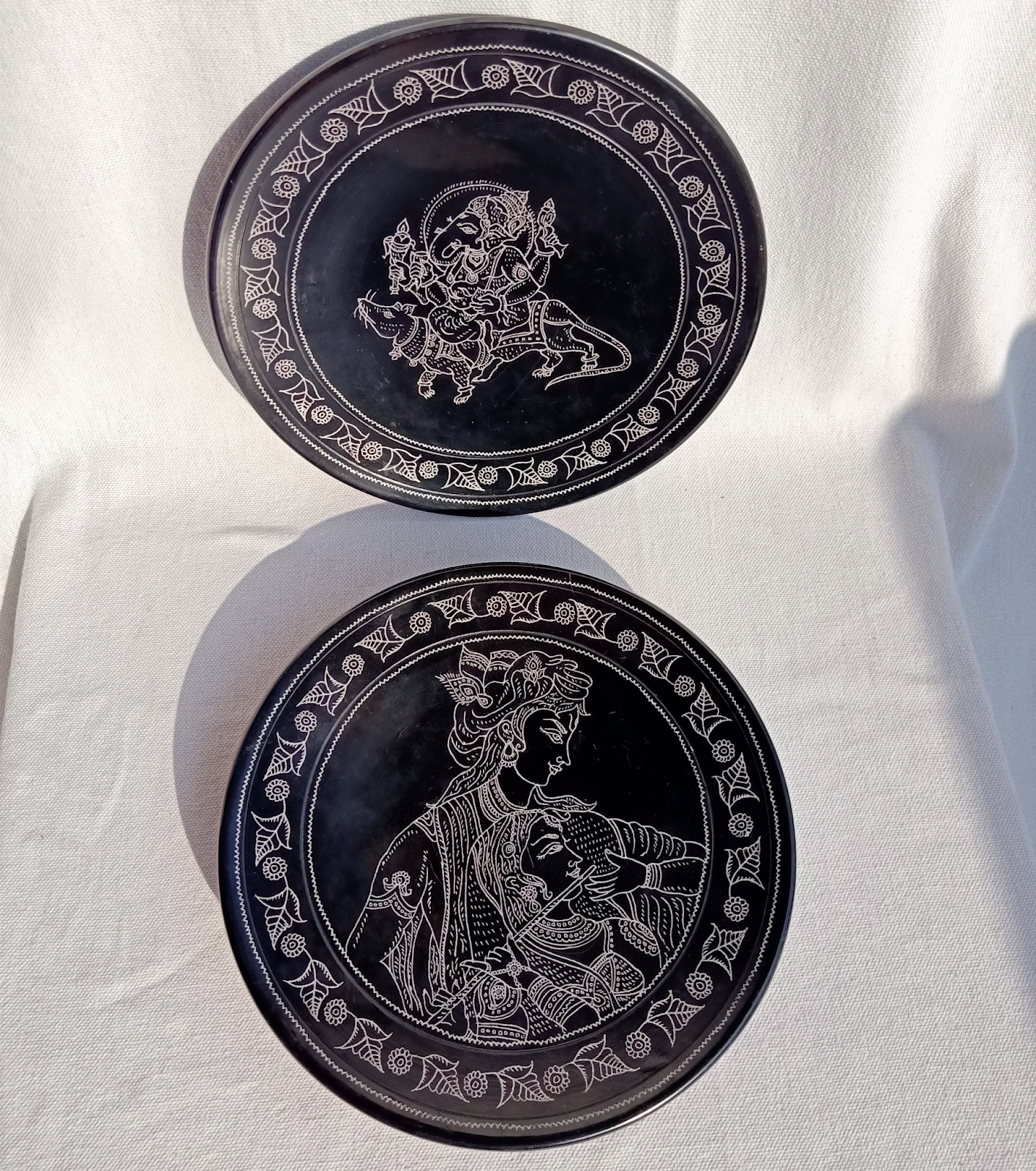
Attaining Sustainability – The Traditional Way!
Going back to our roots is the sure way to attain sustainability. And these traditional crafts are one of our best chances on the way towards achieving it. I aim to empower artisan communities with packaging and shipping facilities to reduce costs of transportation and breakage. I am on a journey of learning by doing. I have learned that there’s only a little that I can achieve alone. I’ll work on building a valuable team to achieve what I have envisioned. The fading art of pottery is presumed as aesthetic antiquity, but I believe it’s more of a quintessential legacy that fulfills our needs to date (Terracotta pottery is Food, Flame, and Microwave Safe!).
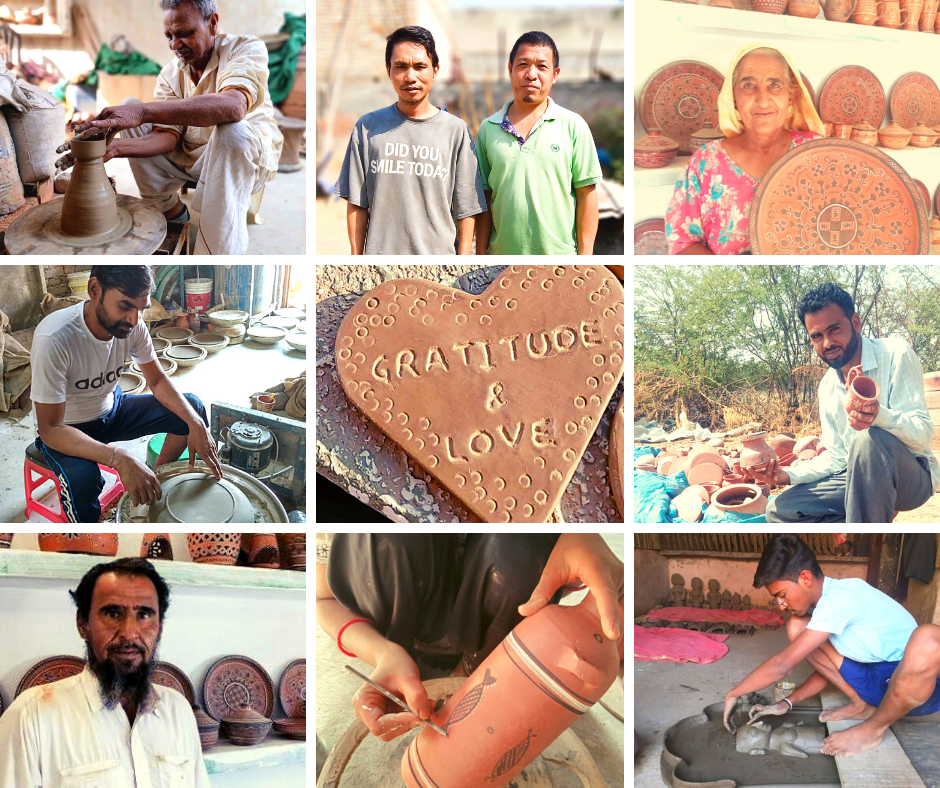
It gives me immense satisfaction as my customer base grows. This growth implies that people are becoming more conscious of sustainable and healthy living, using eco-friendly options, and becoming more aware of the benefits of our traditional arts. The only way to spread awareness and save this dying pottery culture is by supporting our local artisans and uplifting their art from a mere hand-to-mouth means of existence.
NICEorg wishes them the best of luck in their journey ahead!
If your cultural enterprise is in any of our five focus sectors and you would be interested in being featured, write to us at namaste@niceorg.in
